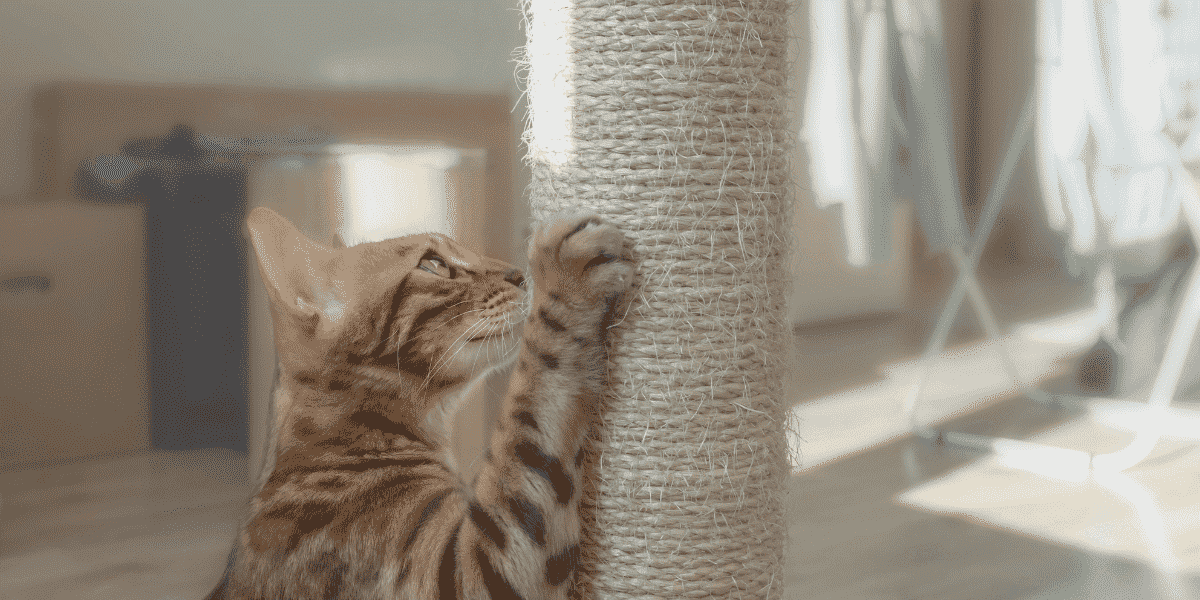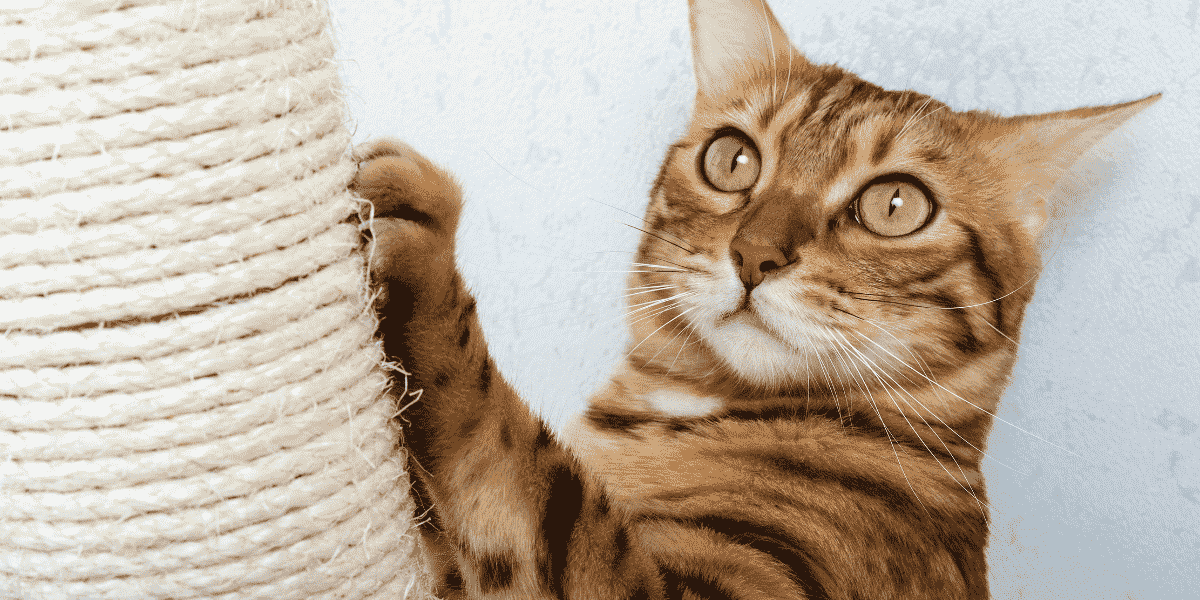Cats, those charming and enigmatic companions, bring joy and warmth to our lives. However, their natural scratching behavior can sometimes lead to frustration and costly furniture damage.
If you’ve found yourself in this predicament, worry not! This comprehensive guide will walk you through an effective cat training process to help you preserve your furniture while keeping your feline friend content.
Why Do Cats Scratch and How Can You Stop It?
Before delving into solutions, it’s crucial to understand why cats scratch in the first place. Scratching is an innate behavior that serves several purposes, including sharpening claws, marking territory, and stretching muscles. Recognizing these motivations is the first step toward finding a resolution.
What Are the Best Scratching Posts for Your Cat?
Investing in the right scratching posts can significantly reduce furniture damage. Opt for posts that are tall enough for your cat to stretch fully and stable enough to withstand vigorous scratching.
Place them strategically near your cat’s favorite lounging spots and close to the furniture they tend to target.
Why Is Sisal Rope a Preferred Scratching Surface?
Cats have preferences when it comes to scratching surfaces. Sisal rope scratching posts mimic tree bark, which cats naturally prefer. The texture is satisfying for them, making them more likely to redirect their scratching behavior toward the posts and away from your furniture.

How Can Positive Reinforcement Help Curb Scratching?
Just as humans respond to rewards, cats do too. When your feline companion uses the scratching post instead of the couch, offer treats, verbal praise, and affection.
This positive reinforcement creates a positive association with the scratching post, increasing the likelihood of continued use.
Can Double-Sided Tape Prevent Furniture Scratching?
Cats dislike sticky textures on their paws. Applying double-sided tape to the edges of your furniture can discourage scratching. As your cat encounters the unpleasant sensation, they’ll eventually learn to avoid those areas, sparing your furniture from damage.
How Should You Care for Your Cat’s Nails?
Regular nail care is essential for both your cat’s well-being and furniture protection. Trim your cat’s nails every couple of weeks, taking care not to cut too close to the quick. Shorter nails are less likely to cause significant damage, even if scratching occurs.
What Role Does Cat Furniture Play in Training?
To cater to your cat’s scratching needs, consider investing in cat-specific furniture. Cat trees, shelves, and condos provide alternate surfaces for scratching and climbing. These additions not only enrich your cat’s environment but also divert their attention from your precious furniture.
Can Cat Pheromones Help Prevent Scratching?
Cat pheromone sprays and diffusers are excellent tools for managing unwanted behavior. Feliway, a popular brand, offers products that release calming pheromones, reducing stress-related scratching.
Using these in conjunction with training can yield effective results.
Why is Regular Play and Exercise Important?
A well-exercised cat is less likely to engage in destructive behavior. Dedicate time daily to interactive play sessions with toys that mimic prey movements. Physical and mental stimulation through play can curb excess energy, reducing the urge to scratch.
How Does Consistency Impact Cat Training?
Successful cat training relies on consistency. Ensure that every member of your household follows the same training methods and enforces the same rules. Inconsistencies can confuse your cat and hinder progress.
When Should You Seek Professional Help for Cat Scratching?
If your cat’s scratching behavior persists despite your efforts, consulting a veterinarian or a professional animal behaviorist is a wise step.
They can assess any underlying medical issues or behavioral problems and provide tailored guidance to address the situation effectively.
Learn a better solution for your cat’s scratching needs! Keep reading to find out more.
Conclusion
Living harmoniously with a cat while maintaining your furniture’s integrity is absolutely achievable. By understanding your cat’s instincts, providing suitable alternatives, employing positive reinforcement, and addressing their physical and mental needs, you can successfully redirect their scratching behavior.
Remember, patience and persistence are your allies in this journey. With these cat training solutions, you’re on your way to a scratch-free and joyful coexistence with your feline companion.
If you’re a multi-cat owner struggling to manage your cats’ scratching habits, this guide is for you. It addresses potential scratching issues in multi-cat households.

